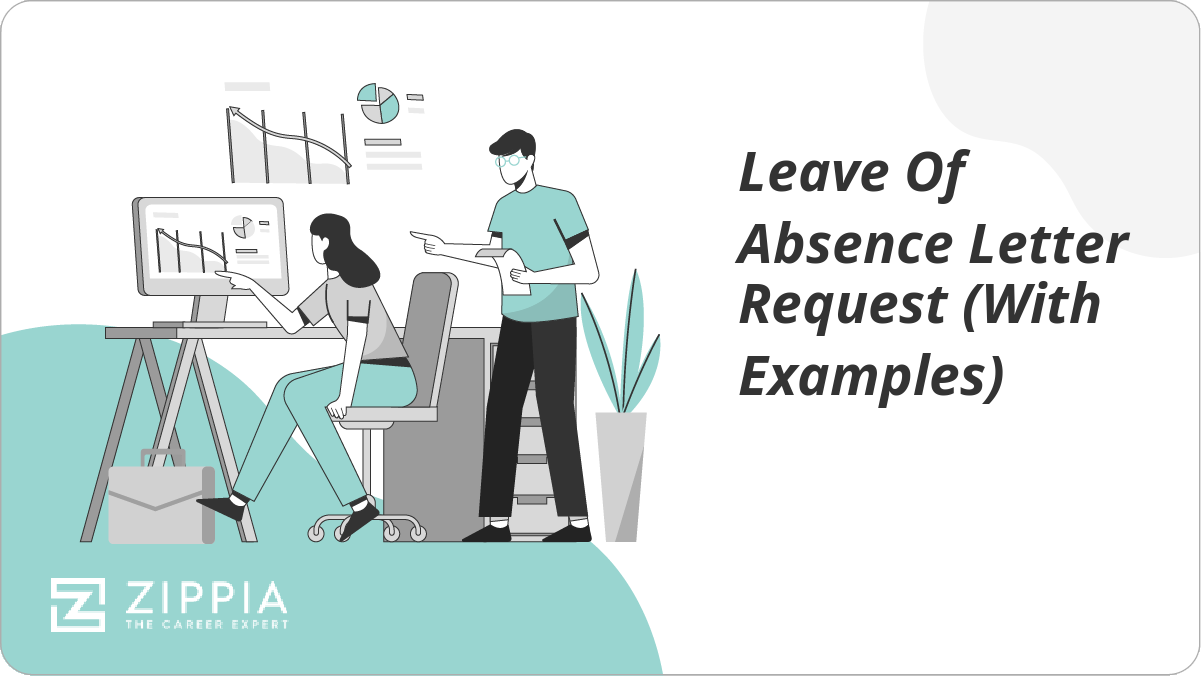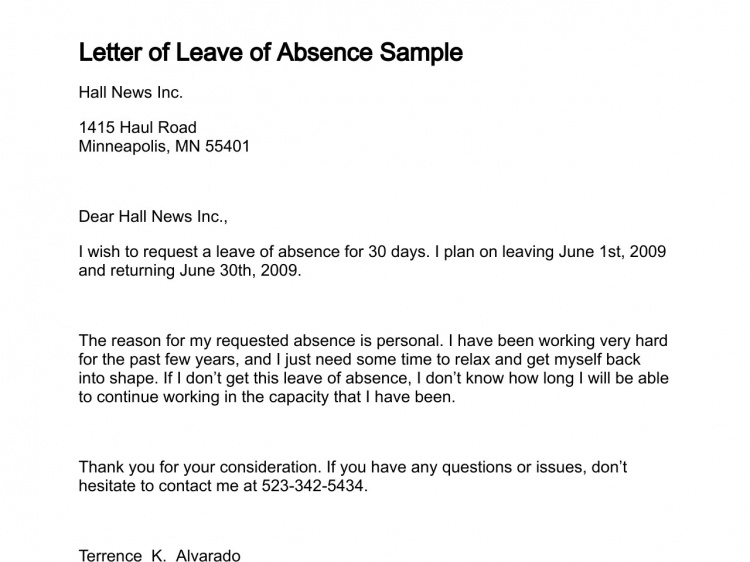Unexpected leaves of absence, whether due to illness, family emergencies, or other unforeseen circumstances, can disrupt work routines. This comprehensive guide provides a structured approach to preparing for such situations, ensuring a smooth transition and minimizing disruption to your team and workflow. It covers crucial aspects from meticulous planning and delegation to robust communication strategies and essential documentation.
By proactively addressing potential issues and establishing clear processes, you can maintain productivity and continuity during your absence. This guide will walk you through essential steps for each stage, from initial planning to personal considerations, empowering you to navigate unforeseen circumstances with confidence and ease.
Planning Ahead
Proactive planning is crucial for navigating unexpected leave of absence situations effectively. This involves anticipating potential disruptions and taking steps to minimize their impact on work and personal life. A well-defined plan allows for a smoother transition and ensures a swift return to productivity upon the individual’s return.
Preparing for Unexpected Leave of Absence
A comprehensive plan should address various potential scenarios, from minor illnesses to significant family emergencies. Thorough preparation reduces stress and allows for a more focused recovery or caregiving period.
Detailed Plan for Unexpected Leave
To prepare for an unexpected leave, a multi-faceted approach is essential. This includes identifying and documenting critical tasks, assigning responsibilities, and creating backup plans for workflow. This proactive strategy ensures minimal disruption during the absence.
- Task Prioritization: Identify essential tasks requiring immediate attention and those that can be postponed or delegated.
- Delegation of Tasks: Clearly define roles and responsibilities for colleagues taking over during the leave period. This ensures smooth workflow continuity.
- Documentation: Maintain complete and accurate records of current projects, deadlines, and ongoing communications. This will enable a rapid return to familiar tasks and knowledge.
- Communication Protocol: Establish a clear communication channel for colleagues to reach out to in case of urgent matters.
Importance of Proactive Addressing of Potential Issues
Anticipating and addressing potential issues before the leave period begins minimizes disruptions to workflow and project timelines. This foresight allows for a smooth transition, ensuring continuity of work.
Checklist of Tasks to Complete Before Leave
This checklist, categorized by urgency, provides a structured approach to preparation. Prioritizing tasks allows for a more organized and less stressful leave preparation period.
- High Urgency: Complete immediate deliverables, assign backup responsibilities for critical projects, and ensure all necessary documentation is finalized.
- Medium Urgency: Delegate ongoing projects, schedule check-ins with colleagues, and finalize handover procedures.
- Low Urgency: Update project plans, prepare handover materials, and ensure backups are in place for critical systems.
Examples of Unexpected Leave of Absence
Different types of unexpected leave of absence require specific preparations. Recognizing the unique challenges of each situation allows for more tailored and effective planning.
- Illness: Preparing for illness involves identifying critical tasks and assigning responsibilities to colleagues. This allows for a smooth workflow during the absence.
- Family Emergency: A family emergency necessitates a flexible approach to tasks. This includes delegating responsibilities, maintaining communication, and ensuring a swift return to work when possible.
- Unexpected Personal Obligations: Personal emergencies can arise. A proactive approach involves delegating tasks and maintaining open communication with colleagues.
Comparing and Contrasting Leave Preparations
The table below highlights the key differences in preparation required for various types of unexpected leave.
| Type of Leave | Key Considerations | Specific Preparations |
|---|---|---|
| Illness | Maintaining workflow continuity, delegating tasks, and ensuring minimal disruption | Assign tasks to colleagues, create backup plans, and establish communication channels. |
| Family Emergency | Flexibility and responsiveness to changing needs, prioritization of urgent matters, and maintaining contact with team members | Identify critical tasks, delegate responsibilities, and establish clear communication protocols. |
| Unexpected Personal Obligations | Flexibility, maintaining communication with the team, and ensuring minimal impact on project timelines | Delegate tasks, establish clear communication channels, and update project plans as needed. |
Delegation and Responsibilities

Effective delegation is crucial for a smooth transition during an unexpected leave of absence. This involves identifying tasks suitable for colleagues, clearly communicating expectations, and ensuring a seamless handover of responsibilities. A well-defined delegation process minimizes disruption and maintains productivity during your absence.
Effective Delegation Process
A systematic approach to delegating tasks helps ensure a smooth transition. This includes a clear understanding of which tasks can be delegated and which require personal attention. Careful consideration of colleague’s skills and workload is paramount for successful delegation.
- Identifying Delegatable Tasks: Begin by evaluating tasks based on their complexity and potential impact. Tasks that involve routine procedures, data entry, or specific project phases can often be delegated. Ensure the delegated tasks are aligned with the delegated person’s skillset and workload. Consider factors such as the task’s time sensitivity and the individual’s familiarity with the procedure. For instance, tasks like scheduling meetings or updating project documentation are frequently delegatable.
- Clearly Communicating Responsibilities: Precise communication is key. Provide clear instructions, including deadlines, required deliverables, and necessary resources. A detailed checklist, outlining steps and expectations, can prove beneficial. Use concrete examples in the instructions, highlighting expected outcomes. For instance, instead of “update the report,” specify “update the report, including the key metrics, by Wednesday at 5 PM.”
- Identifying Non-Delegatable Tasks: Some tasks, due to their sensitivity, criticality, or specialized nature, cannot be delegated. These often involve high-level decision-making, client interaction, or tasks requiring your specific expertise. Examples include finalizing contracts, handling sensitive customer issues, or tasks with high legal or financial implications.
Delegation Flowchart
The following flowchart illustrates a systematic approach to delegation:[Insert a flowchart image here. The flowchart should visually represent the steps: 1. Identify tasks, 2. Evaluate delegatability, 3. Select colleague, 4.
Communicate responsibilities, 5. Provide resources, 6. Monitor progress, 7. Finalize handover.]The flowchart would visually depict the sequential steps from identifying tasks to finalizing the handover. Each step would be clearly labeled, providing a clear and visual guide to the process.
Ensuring a Smooth Transition
Strategies to ensure a smooth transition of responsibilities include proactive communication, clear documentation, and regular check-ins.
- Proactive Communication: Maintain open communication with colleagues throughout the delegation process. Schedule regular check-ins to monitor progress and address any challenges. Regular updates and check-ins can prevent potential roadblocks.
- Comprehensive Documentation: Document all delegated tasks, instructions, and expectations. This ensures continuity and clarity during your absence. Well-maintained documentation can serve as a valuable reference for colleagues.
- Backup Plan: Have a backup plan in place for tasks that may not be fully covered by delegated individuals. This contingency ensures the smooth continuation of operations if unforeseen issues arise. This plan may involve having another colleague available to step in, or having specific tasks covered with readily available materials.
Communication Strategies

Maintaining clear communication during an unexpected leave of absence is crucial for a smooth transition and minimizing disruption to workflow. Effective communication strategies ensure colleagues remain informed, tasks are properly delegated, and critical projects stay on track. This section details essential communication channels and methods to maintain contact and manage expectations.Establishing clear communication channels is paramount for maintaining productivity and collaboration.
Transparent communication ensures that colleagues understand their roles and responsibilities while you are away, minimizing potential misunderstandings and facilitating a seamless transition. Furthermore, well-defined communication protocols enable timely updates and feedback, allowing for swift adjustments to any unforeseen issues.
Communication Channels for Updates and Feedback
Establishing reliable communication channels is essential for effective updates and feedback during your leave. Regular check-ins and updates will keep colleagues informed of your progress and ensure they are aware of any potential challenges.
- Designated Contact Person: Appoint a colleague to act as your primary point of contact during your leave. This person can field questions, relay updates, and ensure information flows smoothly. This person should have access to pertinent project documentation and be authorized to respond to routine inquiries.
- Regular Communication Schedule: Establish a consistent schedule for communication, whether daily, weekly, or as needed. This predictable cadence allows colleagues to anticipate updates and minimizes uncertainty. For example, a daily email summary can keep everyone on the same page.
- Dedicated Communication Tools: Utilize platforms such as email, instant messaging (IM), or project management software to maintain contact. These tools enable quick exchanges of information and facilitate discussions about tasks and deadlines.
Different Communication Methods and Suitability
Selecting the appropriate communication method depends on the urgency and sensitivity of the information being exchanged. A quick question or update may be suitable for instant messaging, while more complex issues may require a detailed email.
- Email: Ideal for conveying detailed information, project updates, and formal communications. Emails provide a permanent record of discussions and decisions, which is useful for future reference. Emails are also suitable for disseminating updates to a large group of colleagues.
- Instant Messaging (IM): Suitable for quick questions, immediate updates, and informal discussions. However, it is less suitable for conveying detailed information or sensitive matters, and should not be used for critical communications.
- Phone Calls: Effective for urgent matters, sensitive discussions, or complex problem-solving. Phone calls enable direct interaction and clarification of issues. This method is particularly useful for troubleshooting.
Potential Communication Roadblocks and Solutions
Several roadblocks can impede effective communication during a leave. Anticipating and addressing these potential issues beforehand will contribute to a smooth transition.
- Lack of clear communication channels: This can lead to confusion and delays in information exchange. Establishing clear communication channels and designating a point of contact mitigates this issue.
- Ineffective communication methods: Choosing the wrong communication method for a specific situation can lead to misinterpretations or delays. Selecting appropriate communication methods, as discussed earlier, is crucial.
- Time zone differences: If your leave involves a different time zone, consider scheduling communication at convenient times for everyone involved. This will facilitate consistent communication despite time differences.
Communication Methods and Their Suitability
This table summarizes various communication methods and their suitability for different situations.
| Communication Method | Pros | Cons | Suitable Situations |
|---|---|---|---|
| Detailed information, permanent record, large group communication | Can be slow, less immediate | Project updates, formal announcements, detailed instructions | |
| Instant Messaging (IM) | Quick questions, immediate updates, informal discussions | Less suitable for sensitive information, no permanent record | Quick queries, minor updates, informal discussions |
| Phone Calls | Urgent matters, sensitive discussions, complex problem-solving, direct interaction | Time-consuming, less efficient for detailed information | Urgent issues, complex problems, troubleshooting |
Documentation and Procedures
Thorough documentation is crucial for a smooth transition during an unexpected leave of absence. It ensures that colleagues can effectively manage responsibilities and maintain workflow without disruption. Properly documented procedures and critical information enable a seamless handover of tasks and knowledge, minimizing the impact of the absence.Comprehensive documentation helps ensure the continuity of operations. Clear procedures, accessible information, and well-defined responsibilities are critical for maintaining a high level of performance and productivity.
This detailed preparation reduces the likelihood of errors and delays, enabling a swift and efficient return to normal operations after the leave.
Critical Procedures and Information
Documentation of all critical procedures and information is paramount for a successful leave of absence. This includes detailed instructions for tasks, access to relevant files and databases, and contact information for key personnel. This approach ensures that colleagues can quickly grasp and maintain existing processes.
Key Documents to Review and Update
Reviewing and updating key documents before a leave of absence is essential for minimizing disruption. Examples include project timelines, contact lists, and client communication logs. These documents should be reviewed for accuracy and completeness, ensuring they reflect the current status and responsibilities. Regular updates of these documents, particularly project timelines, maintain accuracy and reflect ongoing progress.
Communication System for Incoming and Outgoing Communication
Establishing a system for handling incoming and outgoing communication is vital during a leave of absence. This could involve designating a colleague to act as a point of contact for inquiries and updates. A clear communication protocol for handling urgent matters and routine updates should be established and documented. Regularly scheduled updates, either through email or meetings, should be maintained for transparency and consistent communication.
Step-by-Step Guide for Ensuring Work Continuity
A structured approach to ensuring work continuity during a leave is necessary. This should include a step-by-step guide for transferring responsibilities, documenting procedures, and establishing communication channels.
- Identify critical tasks and responsibilities.
- Delegate tasks to suitable colleagues.
- Create a comprehensive document outlining procedures for handling tasks.
- Ensure access to relevant files and databases.
- Establish communication channels and protocols.
- Provide training to designated colleagues on critical tasks and responsibilities.
- Regularly review and update the documentation during the leave.
Table of Documents for Work Continuity
This table Artikels various documents crucial for ensuring work continuity during a leave.
| Document Type | Description | Example |
|---|---|---|
| Project Plan | Detailed overview of the project, including timelines, milestones, and responsibilities. | Project Gantt chart, project reports |
| Client Communication Logs | Record of all interactions with clients, including emails, phone calls, and meetings. | Email archives, meeting notes |
| Task Delegation List | Clear assignment of tasks to colleagues during the leave. | Spreadsheet or document listing tasks and assigned personnel |
| Procedure Manuals | Detailed instructions for performing specific tasks or processes. | Manual for data entry, order processing |
| Contact Lists | Comprehensive list of key personnel, including internal and external contacts. | Internal team directory, client contact list |
Backup and Contingency Plans

Establishing robust backup and contingency plans is crucial for minimizing disruptions and maintaining operational continuity during an unexpected leave of absence. These plans ensure that critical tasks and responsibilities are handled effectively, preventing significant setbacks or project delays. A well-defined strategy helps maintain productivity and allows for a smooth transition during the absence period.Effective backup plans mitigate risks by identifying alternative solutions for various potential issues.
This proactive approach helps anticipate potential problems and establish clear procedures for handling them. This minimizes the impact of the absence and allows the organization to continue operating as efficiently as possible.
Importance of Backup Plans
Backup plans are essential to ensure business continuity during unexpected situations. They act as safety nets, providing alternative approaches for handling tasks and responsibilities if the primary person or team is unavailable. A well-structured backup plan enables the organization to maintain its productivity and achieve its goals despite unforeseen circumstances.
Alternative Solutions for Different Issues
A comprehensive backup plan should address various potential issues. These plans can encompass alternative procedures for different tasks and roles, ensuring that work can proceed smoothly.
- Project Delays: Establish a detailed project timeline with contingency dates to account for unforeseen delays. Define specific tasks that can be delegated to backup team members or outsourced if necessary. This ensures that project deadlines are met or adjusted appropriately, depending on the nature of the delay.
- Resource Constraints: Develop strategies to overcome resource constraints. These might include securing additional resources from other departments or teams, or identifying alternative methods to accomplish tasks without the need for specific resources.
- Personnel Issues: Define alternative workflows or processes in cases of unexpected personnel issues. These could involve shifting responsibilities to backup team members, utilizing project management software for seamless communication and collaboration, or implementing flexible work arrangements.
- Technological Issues: Anticipate potential technological disruptions. Establish a protocol for dealing with system failures or software glitches. This might involve having alternative access to data or using backup servers.
Anticipating Potential Issues and Developing Solutions
Proactive identification of potential issues and development of appropriate solutions are crucial components of a comprehensive backup plan. This involves assessing potential risks and developing strategies to mitigate them. This includes considering different scenarios, anticipating potential challenges, and planning for various contingencies.
- Regular Risk Assessments: Regularly review and update potential risks that could impact project timelines and organizational productivity. Analyze the possible consequences and create backup plans to mitigate these issues. This process should be a routine part of organizational procedures.
- Scenario Planning: Develop different scenarios for unexpected events. Consider various possibilities, including unexpected leave, equipment failures, or natural disasters. This proactive approach allows for the creation of flexible and adaptable backup plans.
- Testing and Validation: Regularly test and validate the backup plans. This ensures that the plans are effective and that all team members understand their roles and responsibilities. Testing helps identify any gaps or weaknesses in the plan, enabling timely adjustments and improvements.
Backup Person or Team for Critical Tasks
Designating a backup person or team for critical tasks is vital. This ensures that essential work continues without interruption. This person or team should have the necessary skills and experience to perform the tasks effectively.
- Clearly Defined Roles: Establish clear roles and responsibilities for the backup team. This ensures that everyone understands their duties and responsibilities, facilitating smooth workflow and accountability. This includes outlining specific tasks and procedures for each member of the backup team.
- Training and Communication: Provide necessary training and communication to the backup team. This ensures that they are equipped to handle critical tasks efficiently. Regular meetings and communication channels are essential for keeping the team updated on ongoing projects.
- Regular Review and Updates: Regularly review and update the backup team’s skills and knowledge. This ensures that they remain current on the latest procedures and developments. This proactive approach maintains a high level of competency and effectiveness within the team.
Procedures for Immediate Action in Case of Unforeseen Emergencies
Procedures for immediate action in unforeseen emergencies are essential. These procedures should be well-defined, clear, and easily accessible to all team members. This enables prompt responses and minimizes the impact of unexpected situations.
- Communication Channels: Establish clear communication channels to ensure timely information sharing during emergencies. This could include instant messaging platforms, dedicated email addresses, or other suitable communication channels. This allows for quick communication and coordination among team members.
- Designated Contact Person: Identify a designated contact person to coordinate responses to emergencies. This person should be readily available and have the authority to make decisions quickly and efficiently.
- Emergency Contact List: Maintain an updated emergency contact list with relevant information, including contact numbers and email addresses. This ensures that the team can reach the appropriate people quickly during emergencies.
Technology and Systems
Ensuring seamless operations during an unexpected leave of absence requires careful consideration of the organization’s technology and systems. Maintaining access to critical information and tools is paramount to minimizing disruption and ensuring a smooth transition for colleagues. This section details strategies for maintaining access to relevant technology and systems while safeguarding data.
Ensuring Access to Relevant Technology and Systems
Maintaining access to critical systems and applications is crucial to prevent disruptions to workflow and ensure colleagues can perform their tasks efficiently during the leave period. This involves confirming access rights, especially for shared resources and specialized software, to avoid any roadblocks for colleagues. Clear documentation of access protocols and passwords for key systems will be critical.
Secure File and Document Transfer
Securely transferring files and documents is vital to maintaining data integrity and confidentiality. This process should be well-defined, using methods such as secure file-sharing platforms or encrypted email, to avoid any data breaches.
Using a secure file-sharing platform is a best practice for transferring sensitive data.
Examples of secure file-sharing platforms include Dropbox, Google Drive, or dedicated enterprise-level solutions. Specific procedures for using these platforms should be Artikeld for the team.
Configuring Systems for Remote Access
Remote access capabilities enable authorized personnel to access critical systems and applications from outside the office. Proper configuration of remote access protocols and security measures are essential for safeguarding sensitive data and maintaining operational continuity. This may involve setting up VPN connections or utilizing cloud-based services for remote access.
Ensuring Data Security During the Leave Period
Maintaining data security is a priority during any leave of absence. Procedures should be established to ensure data is protected from unauthorized access, modification, or destruction. This includes implementing strong passwords, restricting access to sensitive information, and implementing multi-factor authentication wherever possible.
Multi-factor authentication adds an extra layer of security by requiring more than one form of verification to access sensitive information.
Essential Technology and Systems
The following table Artikels essential technology and systems required for the leave period, along with details on how access is maintained and secured.
| Technology/System | Purpose | Access Management | Security Measures |
|---|---|---|---|
| Company Intranet | Access to internal documents, policies, and communication channels | Assigned user accounts with appropriate permissions | Regular password updates and multi-factor authentication |
| Project Management Software | Tracking project progress and tasks | Designated user accounts with access to specific projects | Data encryption and secure file sharing |
| Email Accounts | Communication with colleagues and clients | Delegate email access to designated colleagues | Use of secure email platforms or encrypted email |
| CRM (Customer Relationship Management) | Managing customer interactions | Delegate access to authorized colleagues | Regular data backups and restricted access |
| Financial Software | Managing financial transactions | Restrict access to authorized colleagues with clear delegation | Data encryption and multi-factor authentication |
Personal Considerations

Taking an unexpected leave of absence requires careful planning, not just for professional responsibilities, but also for personal well-being. Prioritizing personal health and maintaining a sense of normalcy during this period is crucial for a smoother return and overall success. This section focuses on strategies for managing personal well-being during your leave, setting boundaries, and maintaining mental and emotional health.A well-structured approach to personal considerations during an unexpected leave can help mitigate stress and ensure a positive experience.
This includes proactively managing your personal needs, establishing healthy boundaries between work and personal life, and engaging in activities that promote mental and emotional balance.
Strategies for Managing Personal Well-being
Maintaining a healthy lifestyle is vital during an unexpected leave. This involves prioritizing activities that promote physical, mental, and emotional well-being. Scheduling time for exercise, maintaining a consistent sleep schedule, and engaging in hobbies are important components of a well-rounded approach.
Setting Boundaries Between Work and Personal Life
Defining clear boundaries between work and personal life is essential for preventing burnout and promoting mental health. This involves limiting access to work emails and communication channels outside of designated work hours. Utilizing technology to help compartmentalize work-related tasks from personal time is a helpful strategy.
Maintaining Mental and Emotional Health
Prioritizing mental and emotional health during an unexpected leave is paramount. This includes engaging in activities that promote relaxation and reduce stress, such as meditation, mindfulness exercises, or spending time in nature. Connecting with loved ones and maintaining social connections can also play a vital role in maintaining emotional well-being.
Addressing Personal Needs During the Leave
Recognizing and addressing personal needs during this time is crucial for a healthy return to work. This includes scheduling time for personal appointments, pursuing hobbies, or engaging in activities that bring joy and fulfillment. Prioritizing personal needs allows for a more balanced and restorative experience.
Examples of Activities to Maintain Mental and Emotional Balance
Various activities can help maintain a positive mindset during an unexpected leave. Examples include pursuing hobbies (painting, reading, gardening), engaging in physical activities (hiking, swimming, yoga), spending time with loved ones, or learning a new skill. These activities help promote relaxation, reduce stress, and maintain a sense of normalcy. A well-rounded approach is key, incorporating a combination of these activities to best meet individual needs.
Final Summary

In conclusion, effective preparation for unexpected leaves of absence involves a multifaceted approach encompassing meticulous planning, responsible delegation, robust communication, and comprehensive documentation. By following the strategies Artikeld in this guide, you can ensure a smooth transition of responsibilities, maintain productivity, and prioritize your well-being during your leave. This comprehensive approach allows you to focus on your recovery or personal matters, knowing your work will continue seamlessly.